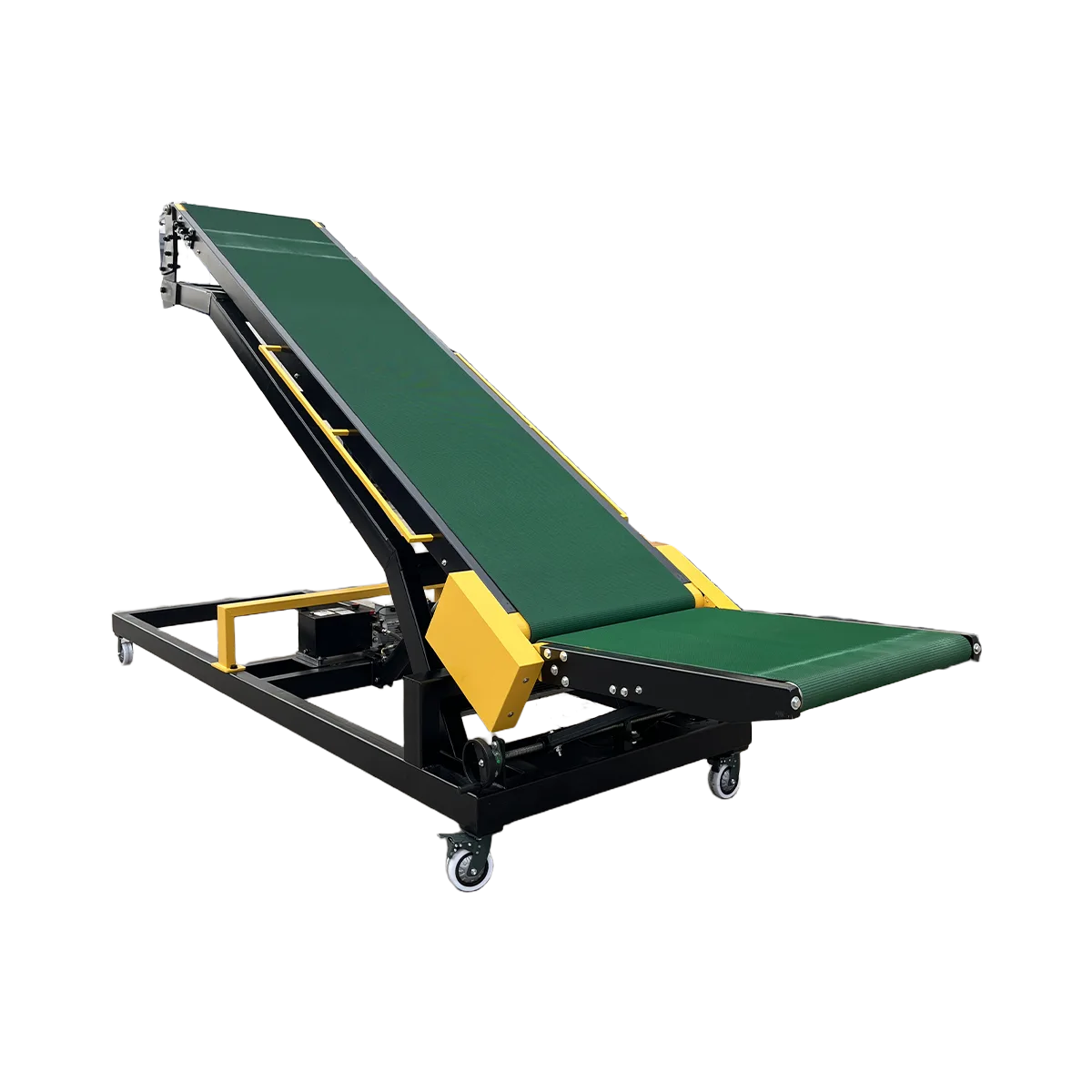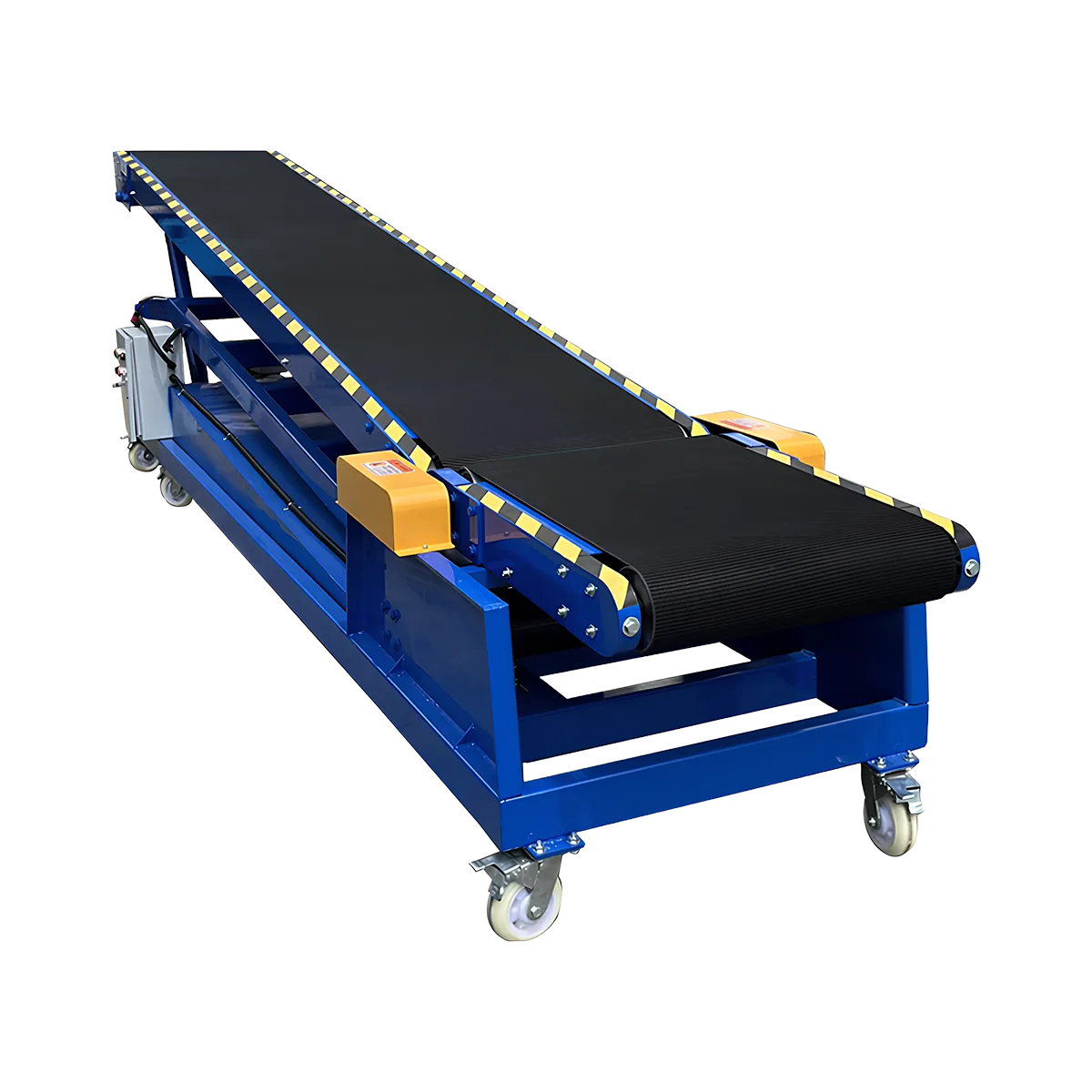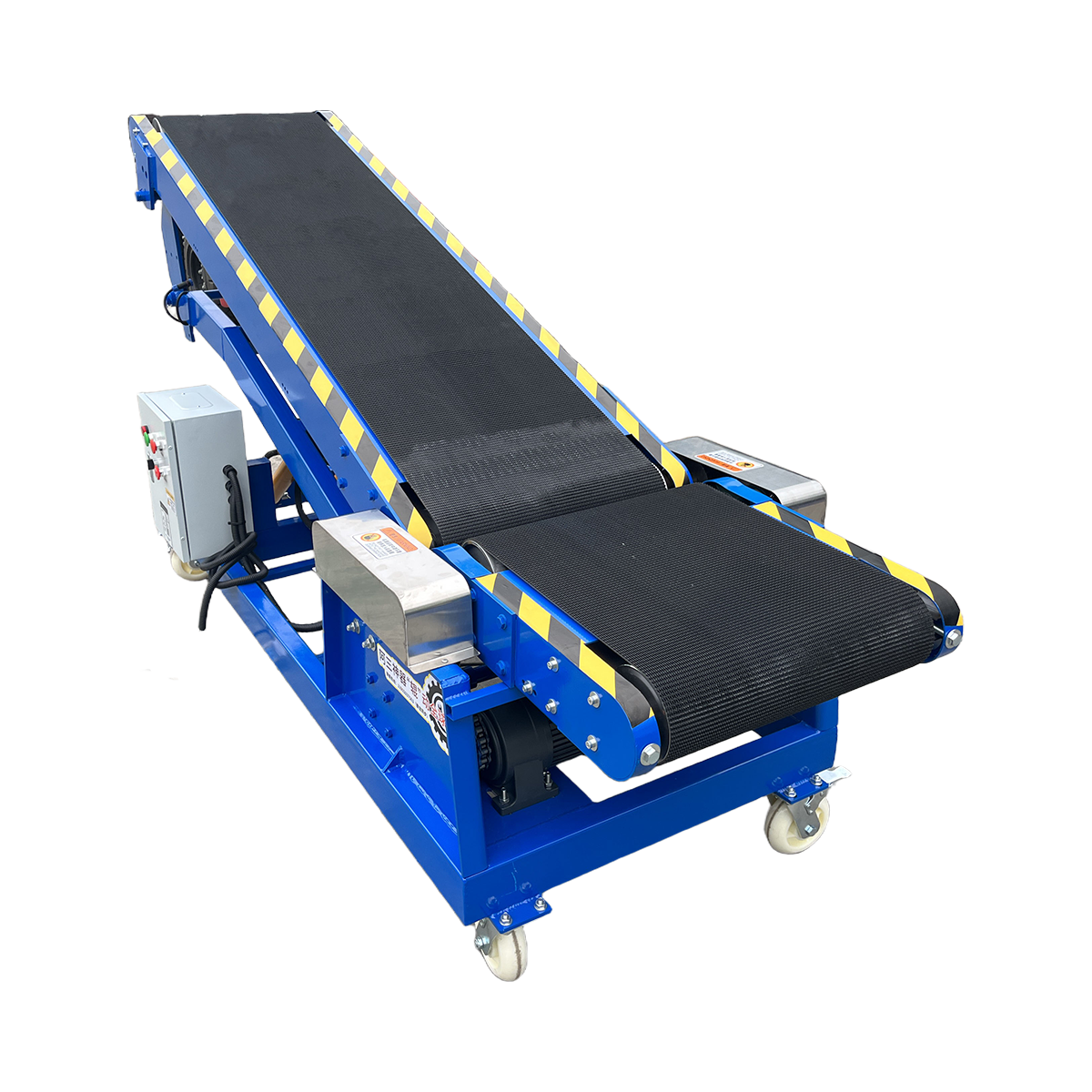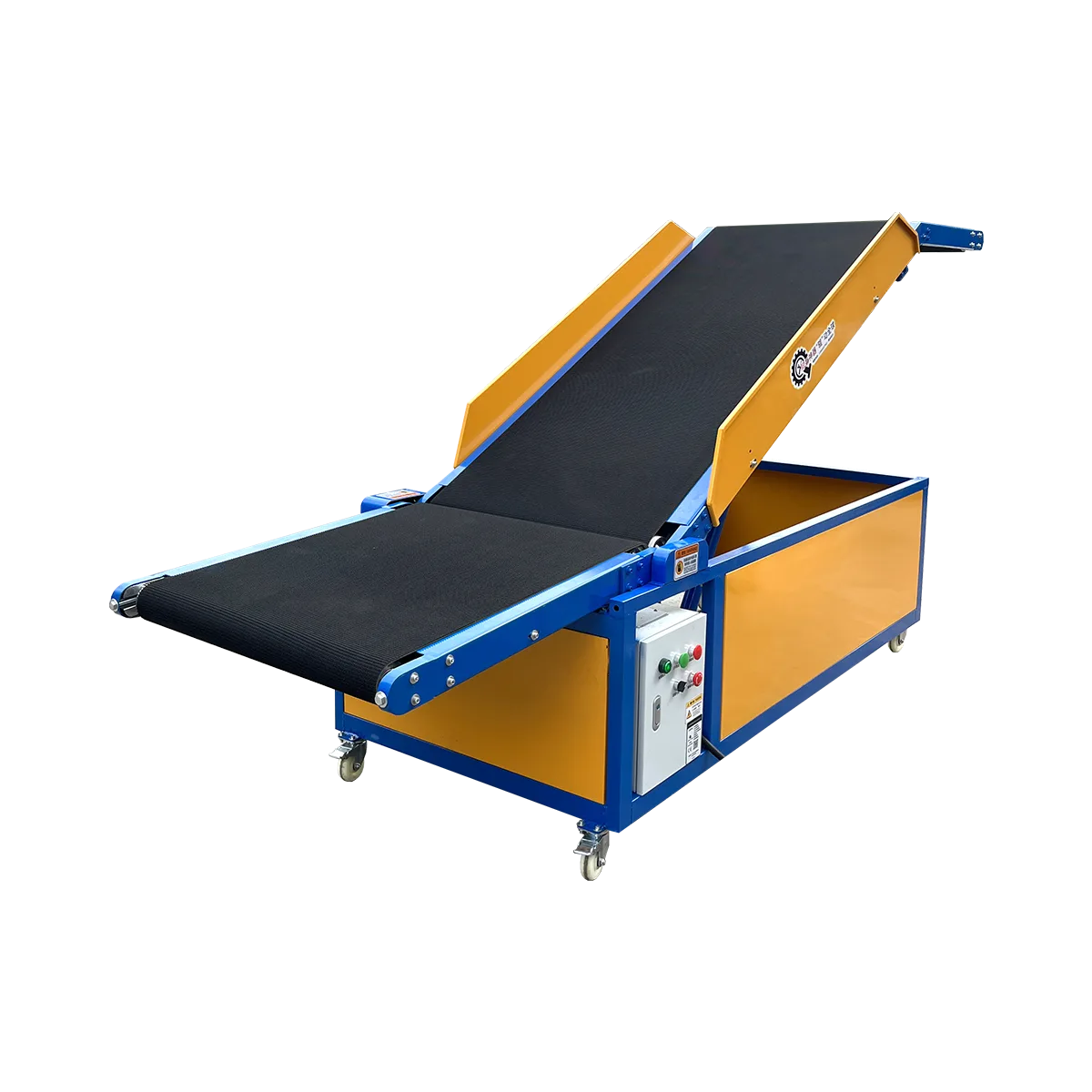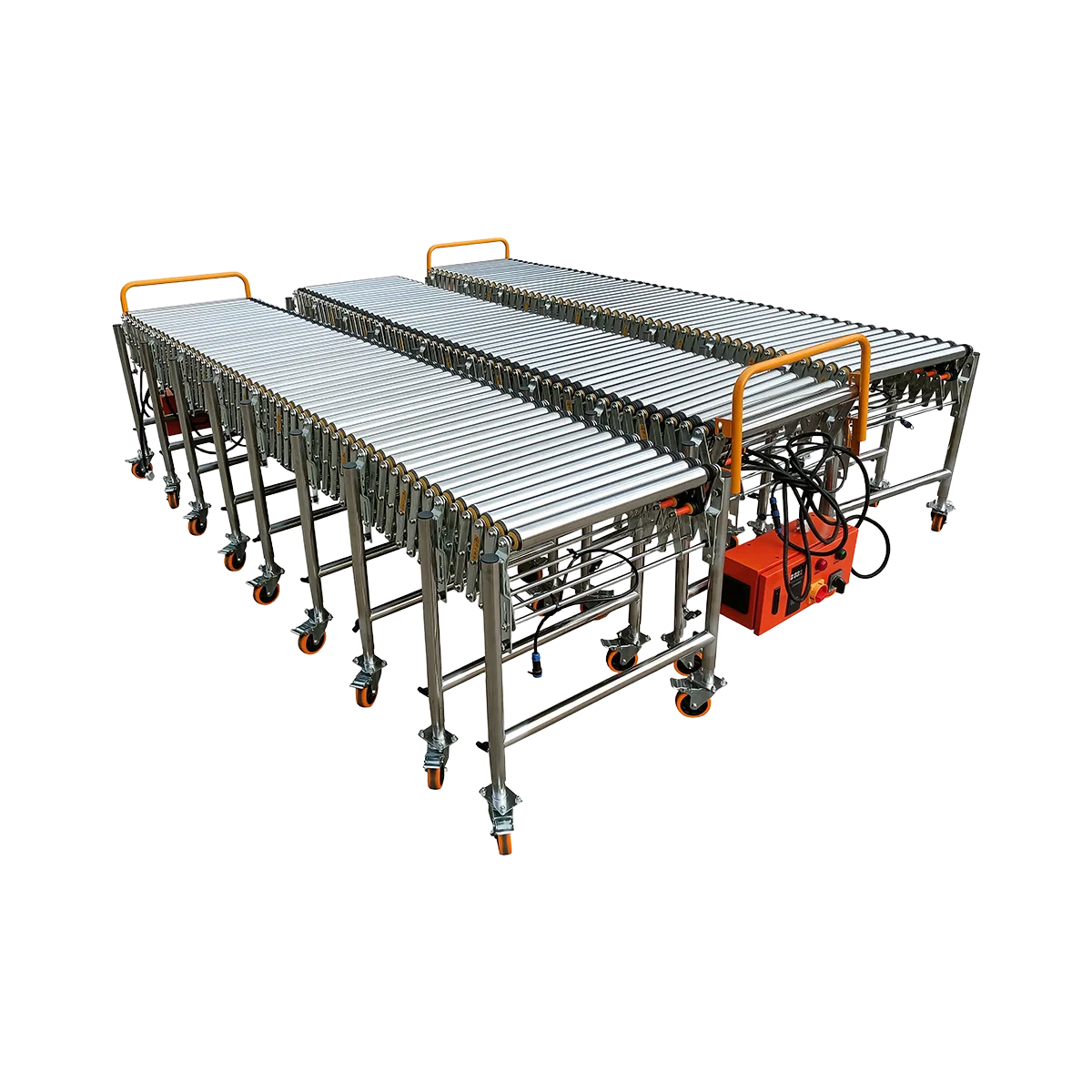How to Load a Truck from Ground Level (When You Don’t Have a Dock)
Discover efficient ground level truck loading solutions with portable loading conveyors. Transform any flat surface into a productive loading zone without expensive dock construction.
Related Products
- Hydraulic Conveyor – Large – 7900 mm LengthCollapsed LengthExtended LengthLoad Capacity
80 kg/m
Applicable GoodsFlat-bottomed Goods
Bagged Goods
- Hydraulic Conveyor – Medium – 7000 mm LengthCollapsed LengthExtended LengthLoad Capacity
80 kg/m
Applicable GoodsFlat-bottomed Goods
Bagged Goods
- Hydraulic Conveyor – Small – 5400 mm LengthCollapsed LengthExtended LengthLoad Capacity
80 kg/m
Applicable GoodsFlat-bottomed Goods
Bagged Goods
- Hydraulic Conveyor – Micro – 3700 mm LengthCollapsed LengthExtended LengthLoad Capacity
50 kg/m
Applicable GoodsFlat-bottomed Goods
Bagged Goods
- Powered Roller Conveyor – Multi-wedge Belt Driven – 2000 mm/SectionCollapsed Length
700 mm
Extended Length2000 mm
Load Capacity100 kg/m
Applicable GoodsFlat-bottomed Goods
The challenge of ground level truck loading is one faced by thousands of businesses worldwide. Whether you’re operating from a leased facility that prohibits permanent modifications, working at a temporary site, or simply don’t have the budget for expensive dock construction, the height difference between ground level and truck beds creates a significant operational hurdle. This disparity—typically 1.2-1.5 meters—forces many operations into inefficient, labor-intensive, and potentially hazardous manual loading processes.


Traditional solutions often involve makeshift ramps, manual lifting, or expensive permanent infrastructure. However, modern logistics demands a more flexible, efficient approach that maintains productivity without compromising worker safety or package integrity. The ideal solution must bridge this height gap while accommodating various truck sizes and providing the reach needed to efficiently load packages deep into the vehicle.
Fortunately, advances in portable loading conveyor technology have created accessible solutions that transform any flat concrete area into a functional loading zone—without the expense or permanence of traditional loading docks.
Your Portable Loading Dock: The Naili Hydraulic Conveyor
The hydraulic conveyor represents a revolutionary approach to ground-level loading challenges. Unlike fixed loading docks that require substantial construction and permanent facility modifications, these systems provide comparable functionality with remarkable flexibility and significantly lower investment.
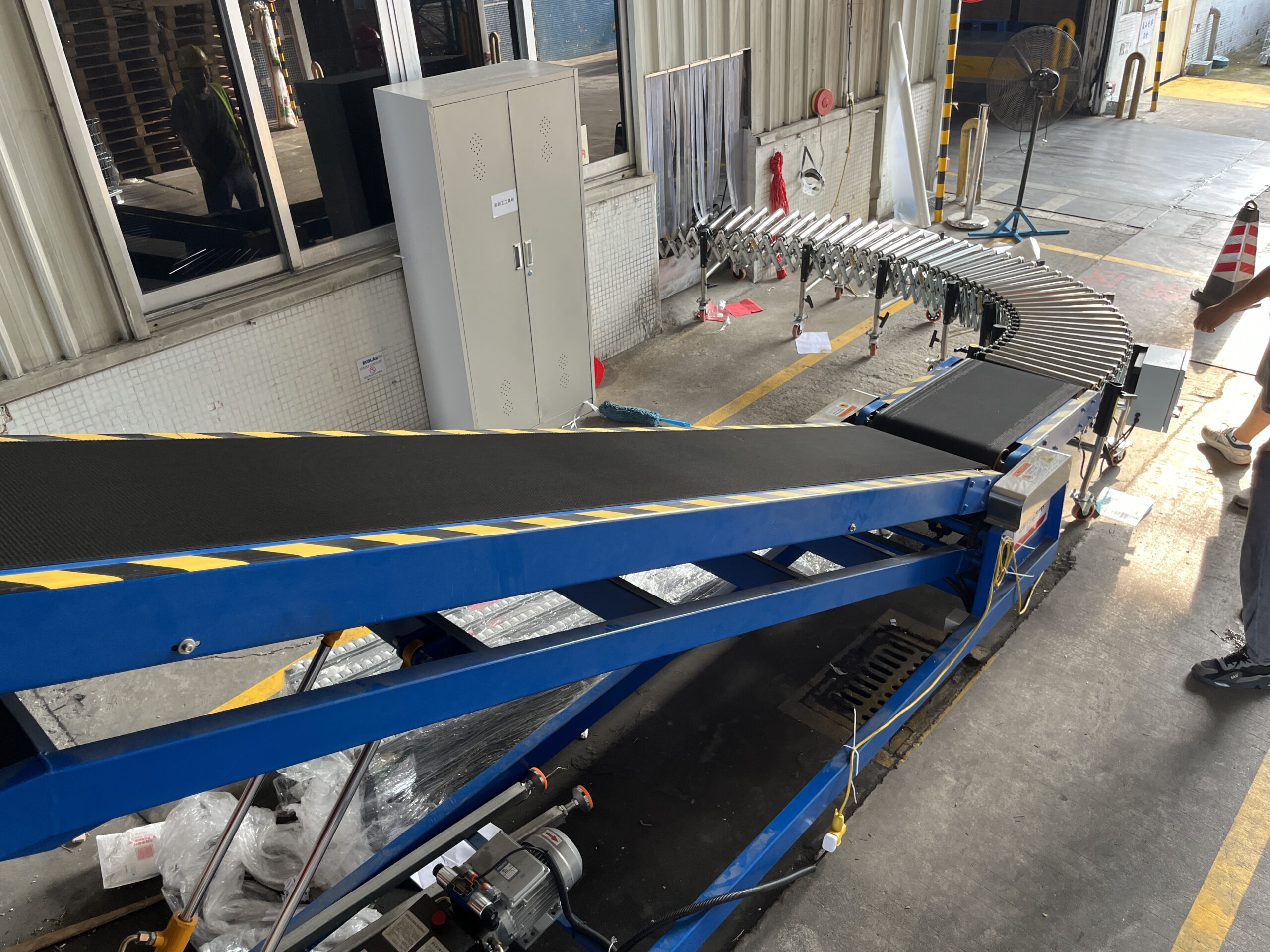

Explaining how it functions as a heavy-duty, height-adjustable mobile ramp.
At its core, the hydraulic conveyor is an inclined belt conveyor with a crucial difference—the ability to adjust its height and angle through a powerful hydraulic lifting system. This fundamental capability transforms it from a simple conveyor into a complete loading dock alternative.
The system consists of three primary sections:
- Lower platform section: Positioned at ground level where workers place packages
- Inclined conveyor section: The main belt-driven section that elevates packages
- Upper platform section: Positioned at truck bed height for smooth transfer into the vehicle
The hydraulic system allows the upper end to be precisely adjusted between 700mm and 2400mm (depending on model), accommodating everything from small delivery vans to full-height shipping containers. This adjustment happens in seconds via simple control buttons, allowing rapid adaptation as different vehicles arrive for loading.
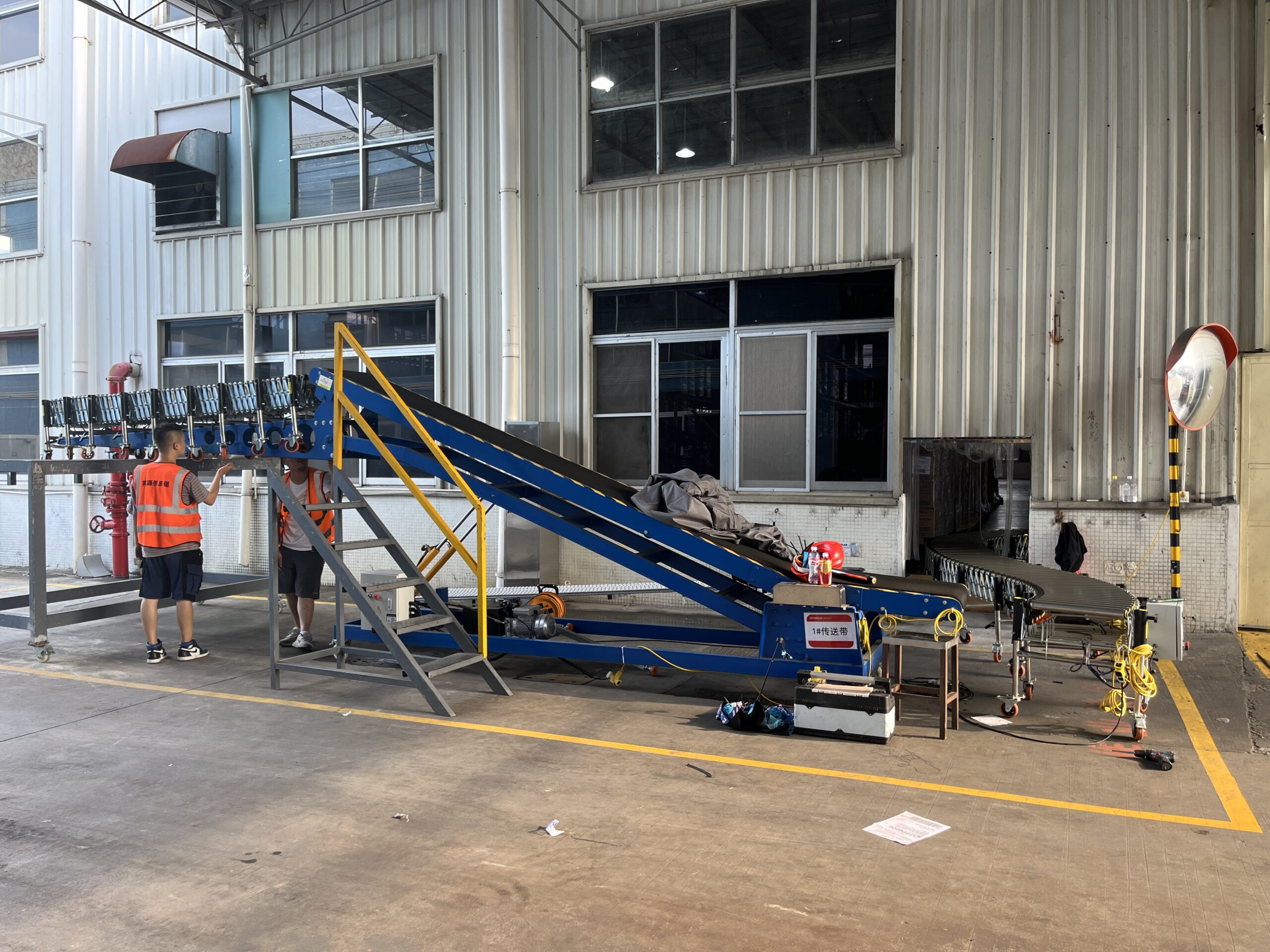

Key functional components include:
- Heavy-duty belt: The 5.0mm PVC black grass pattern anti-slip belt provides excellent grip for packages during the incline journey
- Powerful drive motor: A 750W motor delivers consistent 30 m/min speed regardless of package weight
- Robust hydraulic system: The 2.2kW hydraulic pump and industrial-grade cylinders provide 5 tons of lifting force
- Mobility system: Heavy-duty casters (50mm width, 200mm height) with full braking capability allow the entire unit to be positioned precisely where needed
- Control panel: Simple forward/reverse and lift/lower controls with emergency stop functionality
This combination of features creates a true mobile truck loader that can transform any flat surface into a productive loading zone in minutes. Unlike fixed infrastructure, it can be relocated as operational needs change, stored when not in use, or even transported between facilities when required.
Sizing Your Conveyor: Which model for which vehicle?
Naili offers four distinct hydraulic conveyor models, each designed for specific vehicle types and operational requirements. Selecting the appropriate size ensures optimal performance while avoiding unnecessary investment in oversized equipment.
Micro Hydraulic Conveyor (3700mm Length)
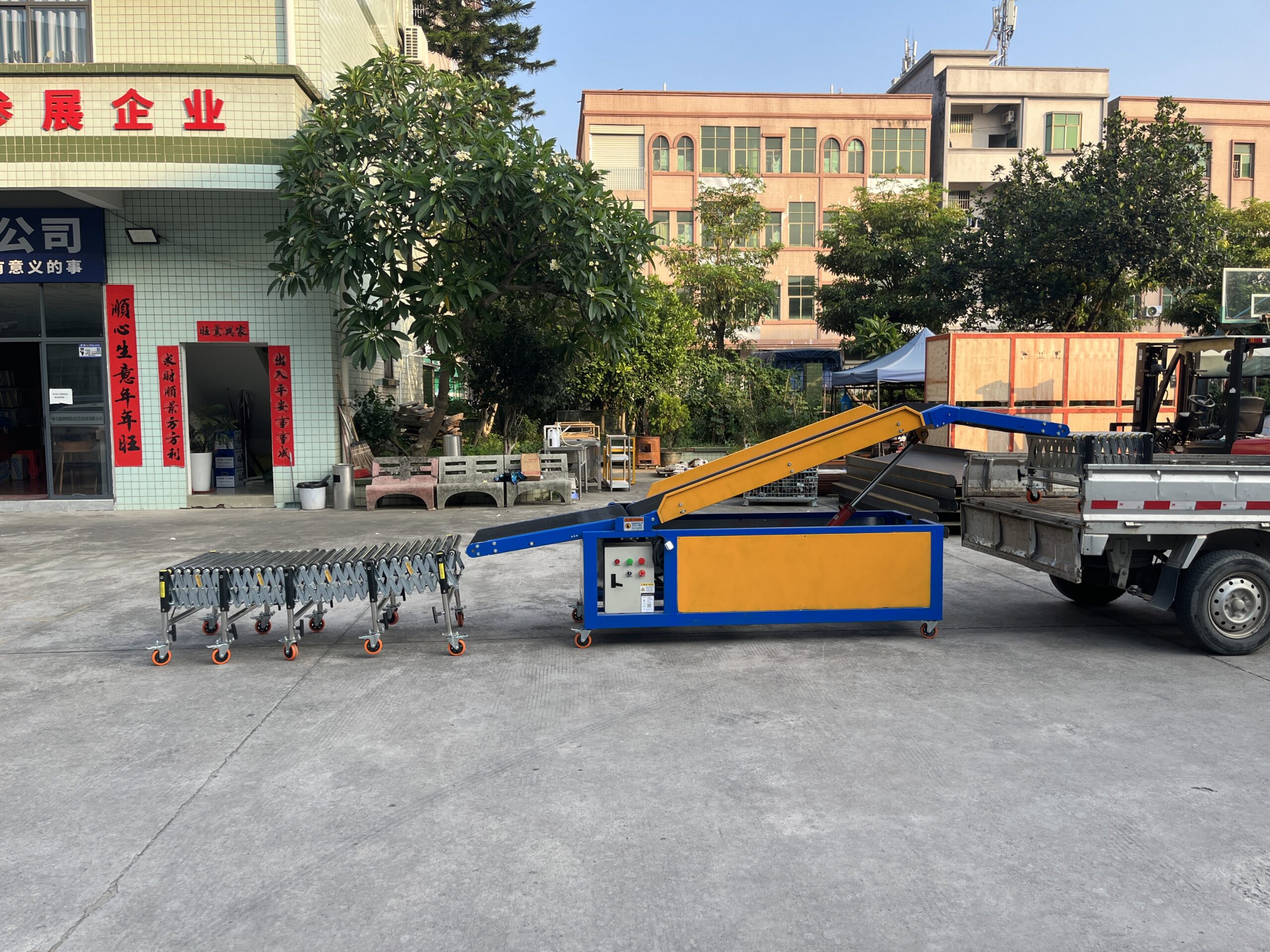

Best for: Small delivery vans and limited operations
- Height range: 700-1700mm
- Load capacity: 50 kg/m
- Key feature: Compact footprint (3700mm total length)
- Limitation: Cannot accept roller conveyor extensions
The Micro model is ideal for businesses primarily loading small delivery vehicles or those with severe space constraints. Its more compact design and lighter weight make it the most maneuverable option, though it sacrifices the ability to add roller conveyor extensions.
Small Hydraulic Conveyor (4000mm Length)
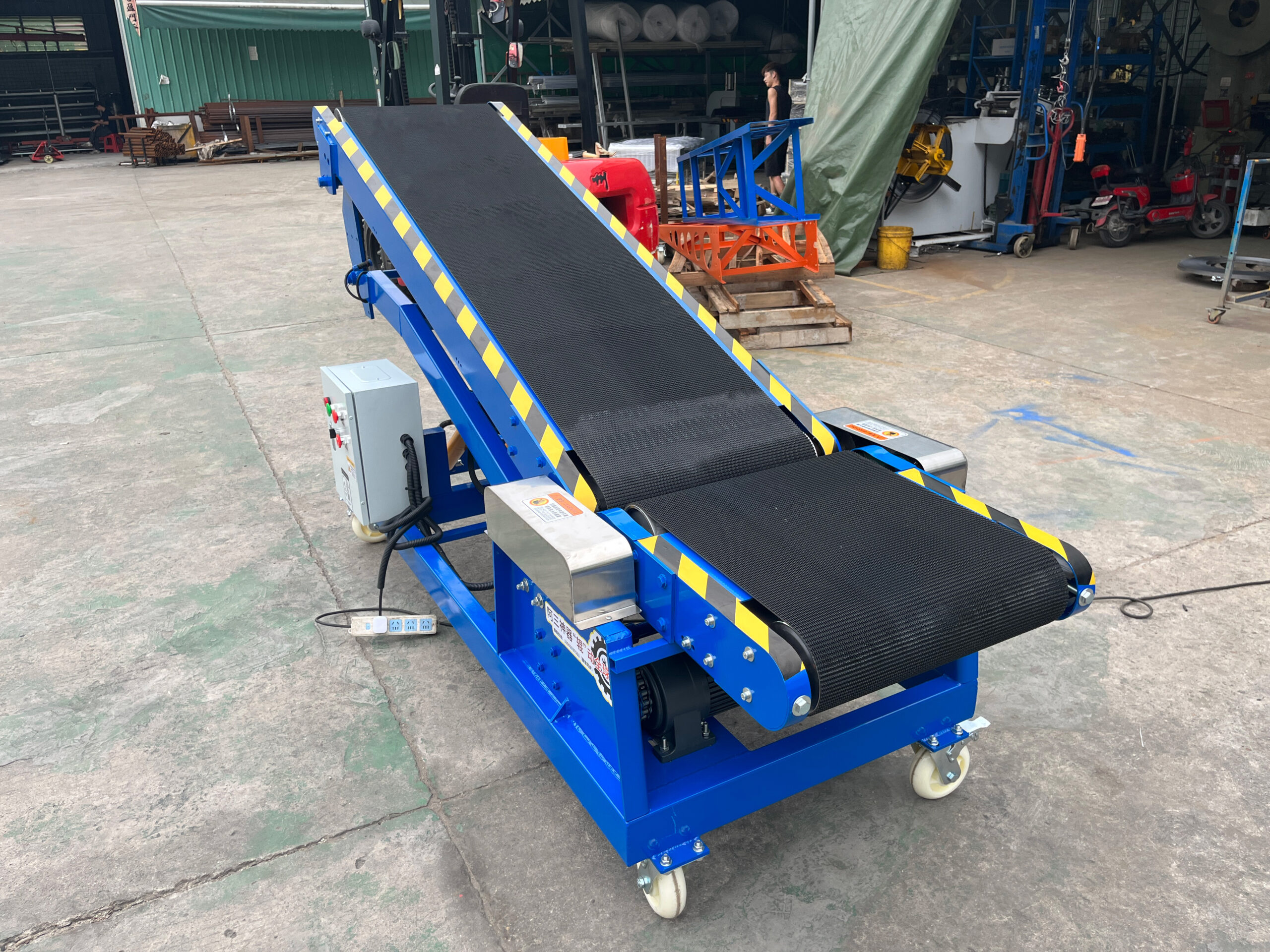

Best for: Standard delivery trucks up to 7.2 meters deep
- Height range: 700-1820mm
- Load capacity: 80 kg/m
- Key feature: Support brackets accommodate up to 6 meters of roller conveyor extensions
- Total potential reach: Approximately 10 meters (conveyor + extensions)
The Small model represents an excellent balance of capability and investment for many operations. It handles standard truck heights while offering extension capability for deeper loading reach.
Medium Hydraulic Conveyor (7000mm Length)


Best for: Full-sized shipping containers and trucks
- Height range: 700-2400mm
- Load capacity: 80 kg/m
- Key feature: Support brackets accommodate up to 10 meters of roller conveyor extensions
- Total potential reach: Approximately 17 meters (conveyor + extensions)
The Medium model provides professional-grade capacity for operations regularly handling full-height shipping containers and deep trailers.
Large Hydraulic Conveyor (7900mm Length)
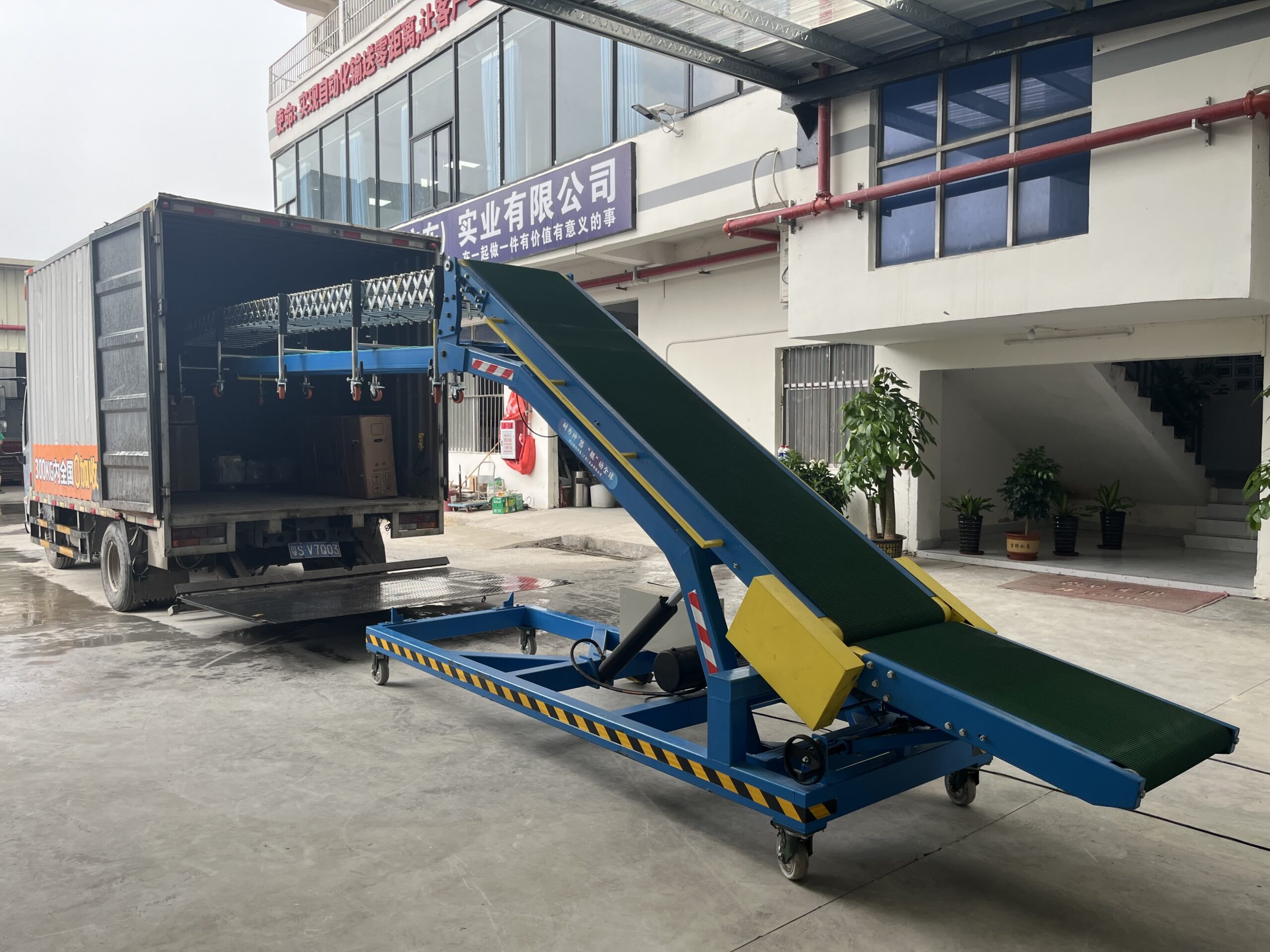

Best for: Maximum reach applications and high-volume operations
- Height range: 700-2400mm
- Load capacity: 80 kg/m
- Key feature: Includes a 3500mm roller frame section and support brackets for up to 12 meters of additional roller conveyor
- Total potential reach: Approximately 20 meters (conveyor + extensions)
The Large model represents the ultimate no-dock loading solution for operations with the highest volume and deepest loading requirements.
| Model | Total Length | Height Range | Load Capacity | Extension Capability | Best For |
|---|---|---|---|---|---|
| Micro | 3700mm | 700-1700mm | 50 kg/m | None | Small delivery vans |
| Small | 4000mm | 700-1820mm | 80 kg/m | Up to 6m | Standard trucks |
| Medium | 7000mm | 700-2400mm | 80 kg/m | Up to 10m | Shipping containers |
| Large | 7900mm | 700-2400mm | 80 kg/m | Up to 12m | Maximum reach needs |
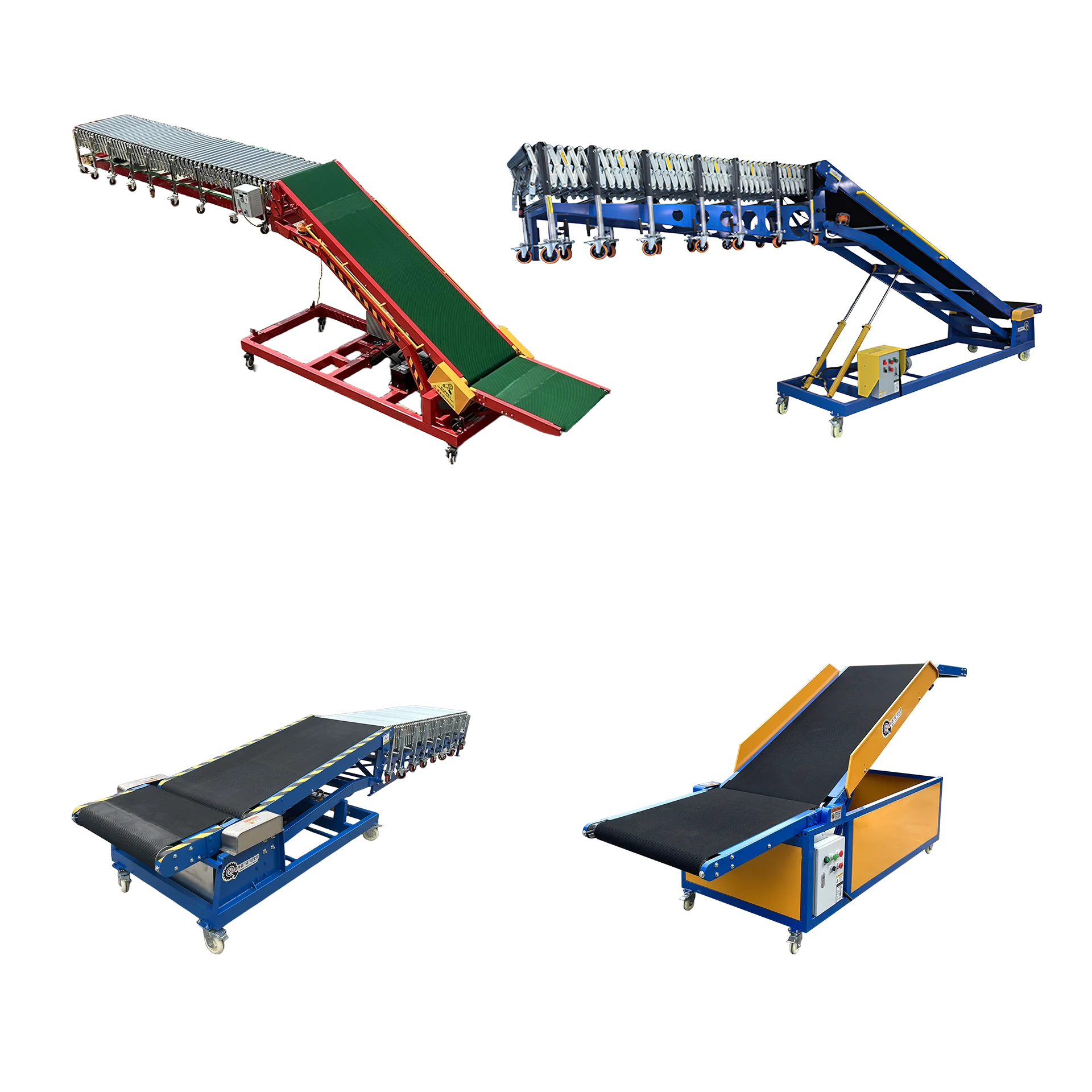

Adding the ‘Reach’: Attaching a Gravity Roller Conveyor to the Top
While the hydraulic conveyor itself creates the critical bridge between ground level and truck height, reaching deep into the vehicle requires additional length. This is where Naili’s innovative bracket system allows for seamless integration with gravity roller conveyors.
A visual guide on how the simple bracket system works.
The upper platform of Small, Medium, and Large hydraulic conveyor models features specially designed support brackets that accept standard gravity roller conveyor sections. This connection requires no tools or special equipment:
- Position the hydraulic conveyor at the truck’s rear door and adjust to the appropriate height
- Place the gravity roller conveyor section onto the support brackets at the upper platform
- Secure the connection using the integrated locking mechanisms
- Extend the gravity roller conveyor to the desired length inside the truck
- Set the appropriate incline (typically 2-5 degrees) for smooth product flow
This modular approach provides several key advantages:
- Customizable reach: Add only the length needed for each specific vehicle
- Adaptable configuration: Easily change direction or create curves as needed
- Simple storage: Collapse the gravity sections when not in use for compact storage
- Incremental investment: Purchase additional sections as your needs grow
How this allows one person to stack goods deep inside the truck.
The combination of powered hydraulic conveyor and gravity roller extension creates a complete hydraulic conveyor system that dramatically improves loading efficiency:
- Elimination of walking distance: Workers remain stationary at the loading point rather than repeatedly entering and exiting the truck
- Reduced physical strain: No lifting required as packages move via conveyor power and gravity
- Improved positioning accuracy: Packages can be precisely positioned anywhere along the conveyor path
- Single-person operation: One worker can effectively load an entire truck by controlling package flow and positioning
For optimal performance with different package types, Naili offers two gravity roller conveyor options that integrate with the hydraulic system:
38mm Roller Diameter Model:
- Lighter weight (20-30kg per section)
- 50 kg/m load capacity
- 1700mm extended length per section
- Best for lighter packages and longer reaches
50mm Roller Diameter Model:
- More robust construction (26-39kg per section)
- 50 kg/m load capacity
- 1500mm extended length per section
- Best for heavier packages requiring more stability
Both models feature a 1:3 extension ratio, allowing them to collapse to approximately one-third of their extended length for storage.


The Ground-Level Loading Workflow in 4 Simple Steps
Implementing a hydraulic conveyor system transforms the ground-level loading process into a streamlined, efficient workflow that maximizes productivity while minimizing worker strain.
Step 1: Position and Prepare
- Move the hydraulic conveyor to the truck’s rear door using the integrated casters
- Lock the casters once in position to prevent movement during operation
- Connect to power supply (standard 220V/380V connection)
Step 2: Adjust Height and Configure Extensions
- Use the control panel to raise the upper platform to match the truck bed height
- Attach appropriate gravity roller conveyor sections to the upper platform
- Extend the gravity sections to the desired depth inside the truck
- Set a slight downward angle on the gravity sections for smooth flow
Step 3: Begin Loading Operation
- Position one worker at the lower platform to place packages on the conveyor
- Position another worker at the transition point or inside the truck to manage flow
- Start the conveyor belt using the forward control button
- Begin placing packages on the lower end at a steady rate
Step 4: Optimize Loading Pattern
- The worker at the upper end guides packages to appropriate positions within the truck
- Start loading from the front of the truck and work backward
- Use the full width of the truck for maximum space efficiency
- Stack packages securely to prevent shifting during transport
This simple workflow allows a two-person team to load a truck in a fraction of the time required for manual methods. The consistent 30 m/min belt speed ensures a steady flow of packages, while the gravity extension allows for precise positioning anywhere within the vehicle.
For operations with varying package sizes or weights, the system’s flexibility allows for easy adaptation. Heavier items can be loaded first as the base layer, with lighter items placed on top. The anti-slip belt ensures stable transport even for irregularly shaped packages, while the gravity roller extensions handle any package with a stable, flat bottom.


Turn Any Flat Concrete Slab into a Productive Loading Zone
The ability to transform ordinary ground-level spaces into efficient loading zones represents a significant competitive advantage for businesses facing space constraints or budget limitations. The hydraulic conveyor approach delivers numerous benefits over traditional loading dock construction:
Financial Advantages
- Lower initial investment: 70-80% less expensive than permanent dock construction
- No building modifications: Avoid costly permits, construction disruption, and permanent alterations
- Rapid ROI: Typical return on investment within 6-12 months through labor savings
- Flexibility for growth: Add additional units or extensions as your business expands
Operational Benefits
- Deployment flexibility: Use anywhere with a flat surface and power connection
- Vehicle versatility: Accommodate any vehicle height from small vans to full containers
- Space efficiency: Store the system when not in use to free valuable floor space
- Reduced labor requirements: Complete loading tasks with fewer workers
- Improved ergonomics: Eliminate manual lifting and carrying, reducing injury risk
Implementation Considerations
When implementing a portable loading conveyor solution, consider these practical factors:
- Surface requirements: A level, stable concrete surface provides the best foundation
- Power availability: Standard 220V/380V power connection needed within reasonable distance
- Traffic patterns: Ensure sufficient space around the system for safe worker movement
- Weather protection: For outdoor applications, consider a simple canopy or awning
- Training needs: While operation is straightforward, brief training ensures optimal use


By addressing these considerations, businesses of any size can implement a professional-grade loading solution without the limitations and expense of traditional infrastructure. The hydraulic conveyor approach democratizes efficient logistics, allowing even small operations to achieve the loading productivity previously available only to facilities with permanent docks.
Whether you’re a growing e-commerce business, a warehouse in a leased facility, or a logistics operation with multiple loading locations, the hydraulic conveyor system provides the perfect balance of functionality, flexibility, and affordability.
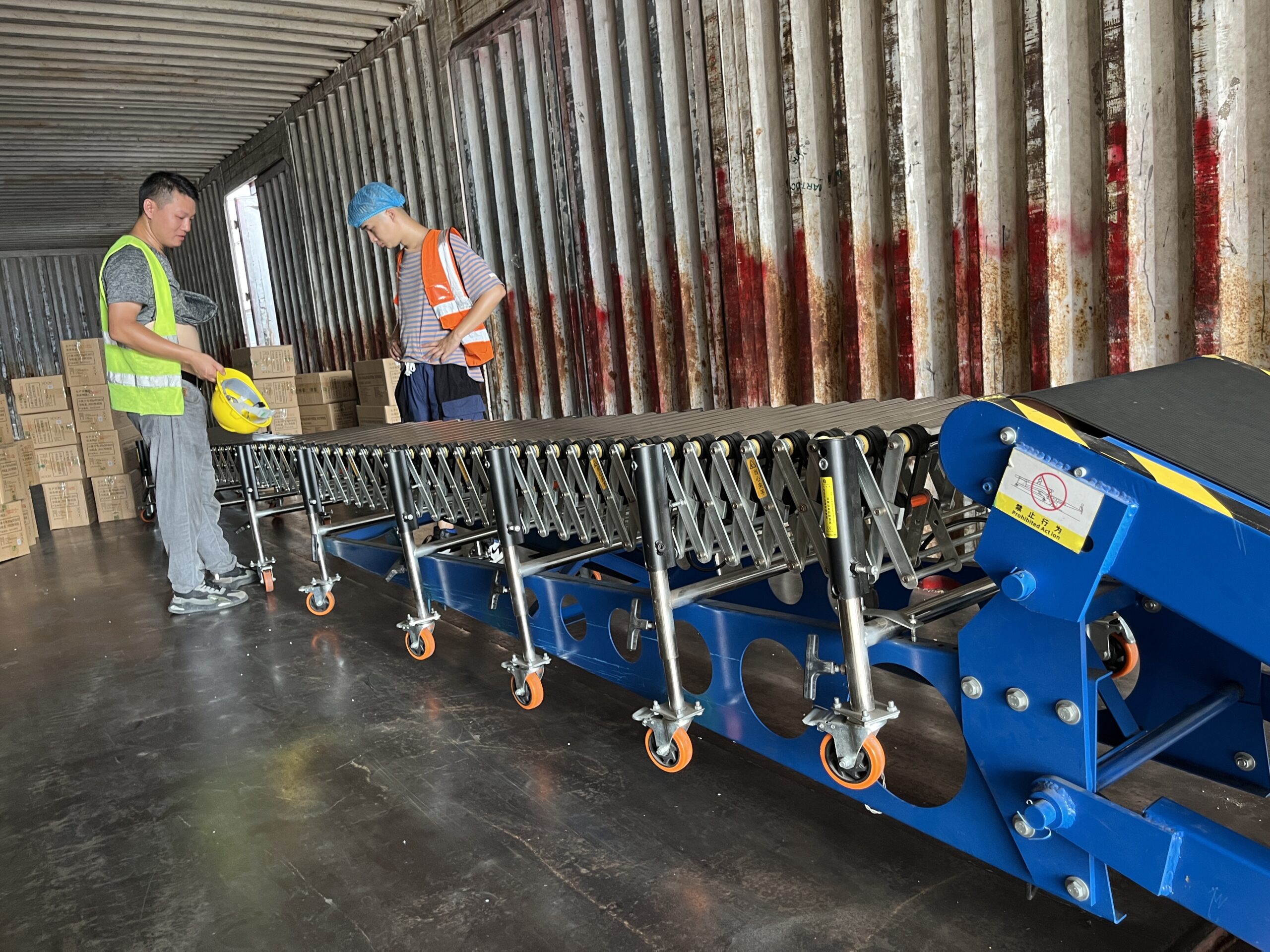

Frequently Asked Questions
What is the typical ROI timeframe for a hydraulic conveyor system?
Most operations implementing hydraulic conveyor systems see ROI within 6-12 months through labor savings alone. The efficiency gains typically allow a reduction in loading staff by 30-50%, while increasing throughput by a similar percentage. Additional savings come from reduced product damage and lower injury-related costs.
Can the hydraulic conveyor system be used outdoors?
Yes, the system is designed for both indoor and outdoor use. The heavy-duty construction with electrostatic spray treatment provides good weather resistance. For permanent outdoor installation, a simple canopy is recommended to protect the electrical components and extend equipment life. The system performs well in temperatures from -10°C to +40°C.
How many workers are needed to operate the system efficiently?
The system is optimally operated by two workers—one placing packages on the lower end and one managing the flow at the truck end. For lighter packages or lower volume operations, it’s possible for a single worker to manage the entire process by alternating between loading and arranging positions.
What maintenance is required for the hydraulic conveyor?
Regular maintenance includes monthly hydraulic oil level checks, quarterly inspections of hydraulic seals and bearings, and periodic lubrication of moving parts. The conveyor belt should be examined weekly for proper tension and wear signs. With proper maintenance, these systems typically provide 5-10+ years of reliable service.
Can the system handle fragile or irregularly shaped items?
The hydraulic conveyor’s PVC 5.0mm black grass pattern anti-slip belt provides excellent grip and stability for various item types. The controlled incline and consistent speed (30 m/min) ensure smooth transport of both regular boxes and moderately irregular items. For extremely fragile goods, the speed can be managed by careful placement timing, while very irregularly shaped items may require special handling consideration.
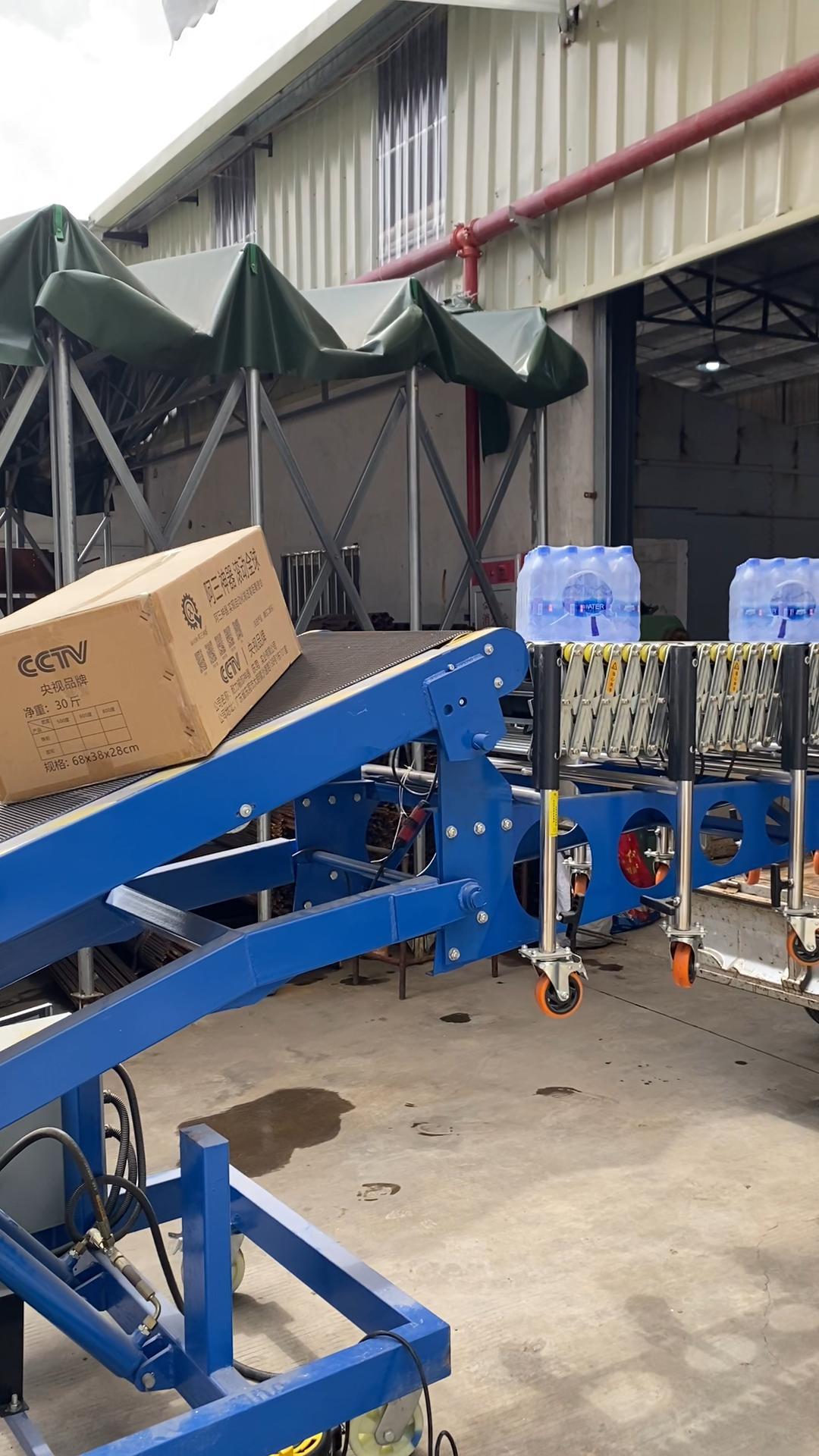

Table of Contents
Recent Posts
Optimize hardware store logistics with the right building supply conveyor systems. Our guide to tool distribution systems enhances retail warehouse automation for efficient operations.
Optimize your medical supply logistics with efficient gravity conveyor systems. Learn how to safely handle healthcare products while improving your hospital supply chain operations.
Discover how a sports equipment conveyor system can streamline your athletic gear logistics. Flexible conveyor solutions for all shapes and sizes of sporting goods.

